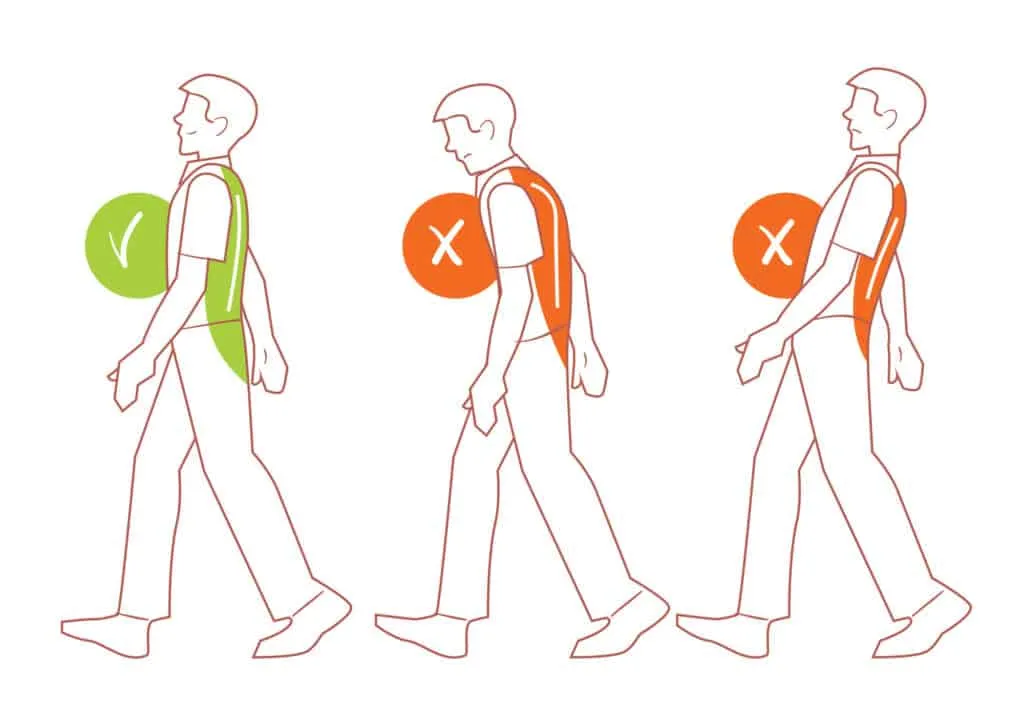Have you been suffering from back pain?
Feeling strain in your lower back?
Struggling with daily tasks and uncomfortable sleep?
It’s hard not to panic and turn to Dr Google for a diagnosis when suffering from lower back pain. However, we wouldn’t recommend basing a diagnosis through the web.
Depending on the internet will leave you panicked about cancers, slipped discs, potential surgery procedures, and all the worst-case scenarios that you can think of. This is a whole lot of stress that you don’t need, especially when your back pain could be something completely solvable – such as posture.
Yes, that’s correct!
Your back pain could simply be your unsupported postures. These cause the loads on your muscles and spine to incorrectly disperse, weakening your ability to maintain healthy posture and punishing the muscles in your lower back.
Not to mention how your complex network of muscles, joints, and discs can also be pushed out with their natural flexibility.
Furthermore, when living with poor posture, you are more susceptible to injury from improper lifting, or incorrect movement. If your muscles are weakened and tender, vigorous movement can cause extra vulnerability when being active, exercising, or getting intimate with your partner.
While we would never prevent you from seeking medical help, the vast majority of lower back pain comes from unsupported posture. Modern life often feeds this fire, with so many of us chained to a desk after car-based commutes.
Then there’s the whole lockdown thing, where we’ve been squirrelled away in our homes for months at a time. It all takes a toll on our posture and, subsequently, our back pain.
So, what can you do to correct this posterous issue (pun intended)? And what should you try to avoid doing?
Those Common Posture Issues You’ve Never Noticed Before
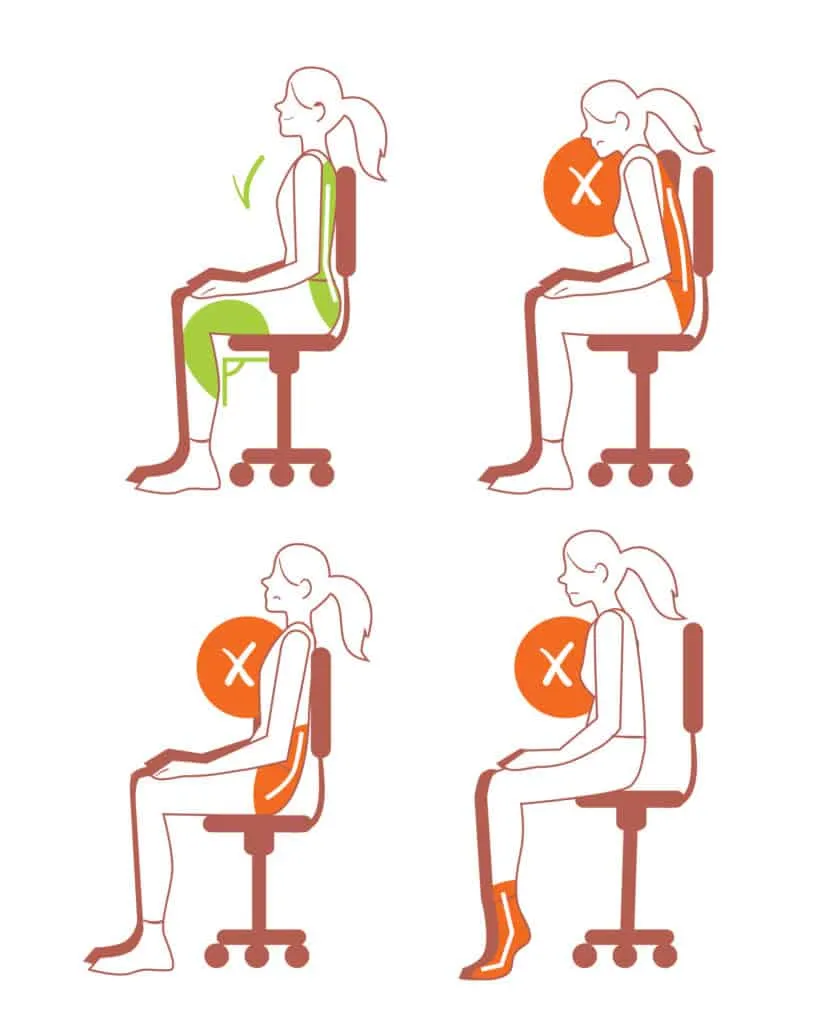
Ok. So your everyday activities involve plenty of exercise, long walks, and bursts of stretching, right?
Contemporary life doesn’t really allow that sort of daily behaviour, so enough daydreaming! In reality, our daily movements include a combination of short walks, sitting, bending, standing, lying down, and lifting. That’s a lot of activity for you back.
However, you can develop bad habits with these daily movements. And these habits can all feed into your posture problems.
How often have you been slouched when sitting on your couch or office chair? Or hunched forward while cooking or gardening?
Doesn’t sound like much, but being slouched or hunched causes stress on your back and shoulders. The same story applies to sitting on your bed while working on your laptop, lying on your front while playing video games, or overstretching while doing chores.
Excessively scrolling through your phone can cause what’s become known as “text neck”, as we scrunch ourselves up by slouching, rather than bringing the phone up to face level.
It’s common to find that new sessions of pain often coincide with the start of a new job, where a new office chair could be incorrectly adjusted for adequate support. If the discomfort in your lower back subsides after readjusting and changing positions – or intensifies during a certain time of day – posture is likely the primary cause of your lower back pain.
It’s worth pointing out at this stage that it takes less effort to maintain a correct posture than it does to completely address an incorrect posture. Try to straighten your spine if you feel yourself gradually slumping throughout the day.
Why Poor Posture Causes Back Pain
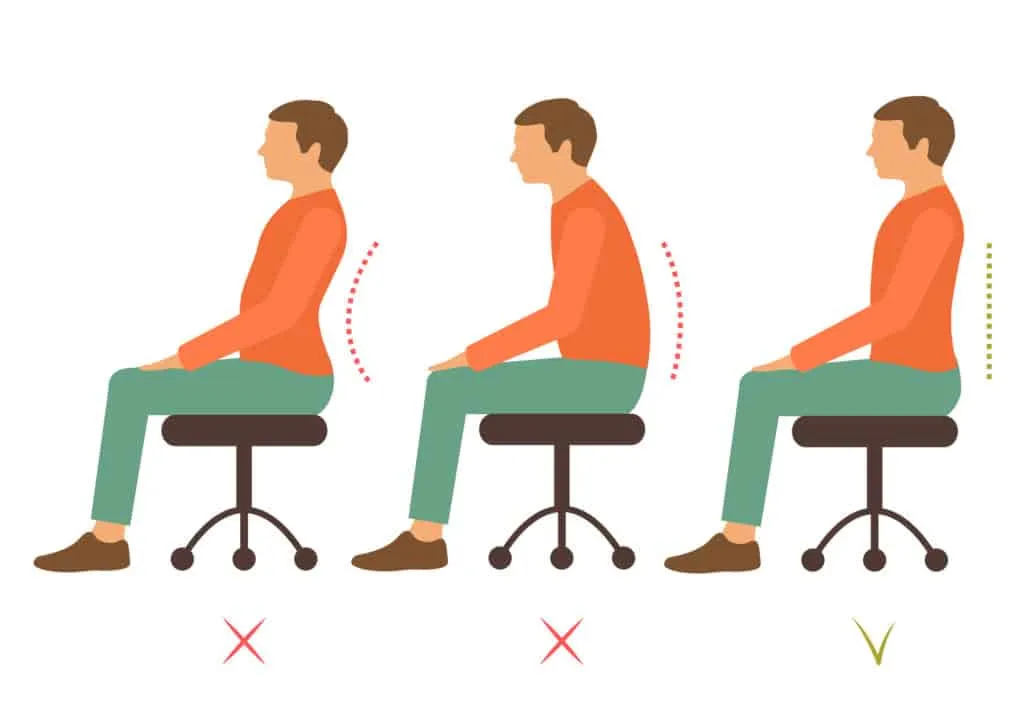
When subjecting your body to poor posture, you inflict stress upon your muscles and tissues, alongside your discs and lumbar facets (spinal joints). As time marches on, these stresses eat away at your structure and eventually lock you in a constant hunch – prolonging your lower back pain.
All of this prolonged hunching (regardless of whether you are sitting or standing) seriously affects your core back and abdominal muscles – causing strained and painful bouts where blood supply is restricted. Once that weakness sinks into the trunk of your lower back, it’s going to become harder and harder to rectify.
The impact is not just limited to muscle tissue, either. For example, sitting for long spells in an unsupported sitting position creates a small forward bend in your spine, which causes issues for the lower load-bearing discs. Herniation can occur during this time, and trust me – you don’t want that!
While your back becomes increasingly vulnerable to strenuous movement, so much as a slightly incorrect lifting procedure can result in a herniated lumbar disc. This sends pain straight into your lower back and down the spinal nerve into your leg.
A herniated disc can cause enough pain to stop you dead in your tracks, and it will take considerable time before the pain can be fully managed through physical therapy and painkillers.
Sadly, COVID-19 seems to have brought about a higher number of cases where poor posture has caused herniated discs. As we’ve all spent so much time working at home over the last 18 months, improper posture when using a laptop (or reading documents and printouts) has created back issues for thousands of people.
Part of the problem comes from finding new ways to sit, yet some of these positions (such as lying on your front) can force your lower back and hip to extend and bend backwards, going against the natural curve of the lower spine.
This information is all well and good, but how can you prevent herniated discs and other health issues that come with poor posture?
How You Can Combat Poor Posture: Walk Tall!
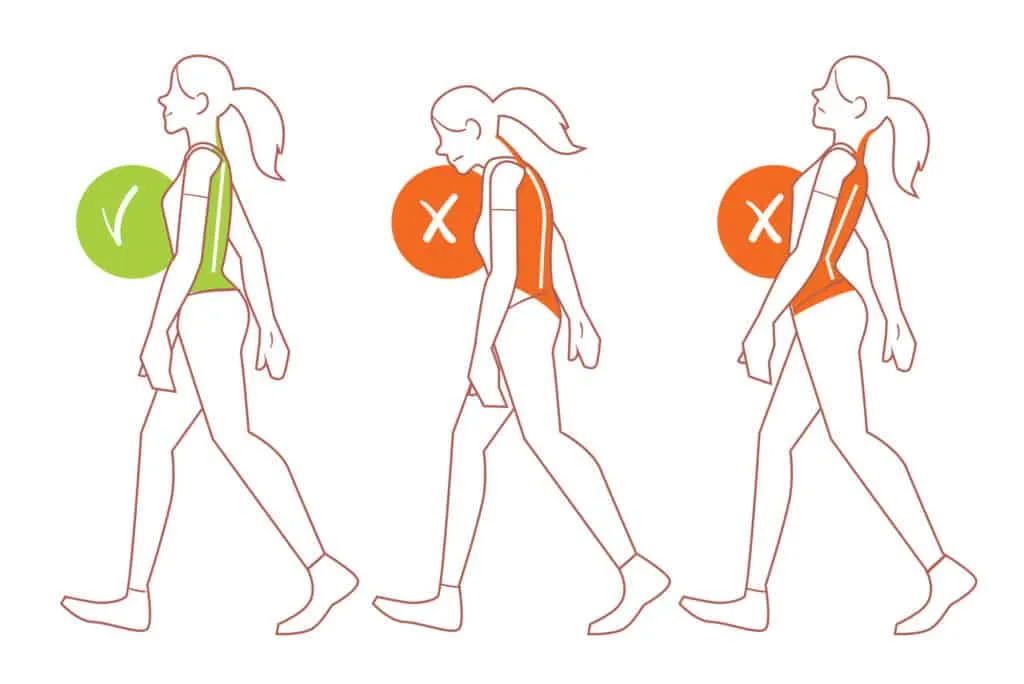
Hold your head up high and walk with pride! No, seriously. Get that head up and walk tall. One of the best ways to ensure good posture is to look straight ahead and keep your head firmly balanced between your shoulders, and above your spine.
Relax those shoulders and keep your spine straight. This keeps everything in line and prevents any build-up of stress in your muscles or joints.
When walking, ensure that your foot lands on the heel and then rolls forward, before using this motion to push yourself onwards. This is the healthy way to walk, and keeps a gentle rotation of the spine in time with the gentle swing motion of the opposite arm.
Support When Sitting
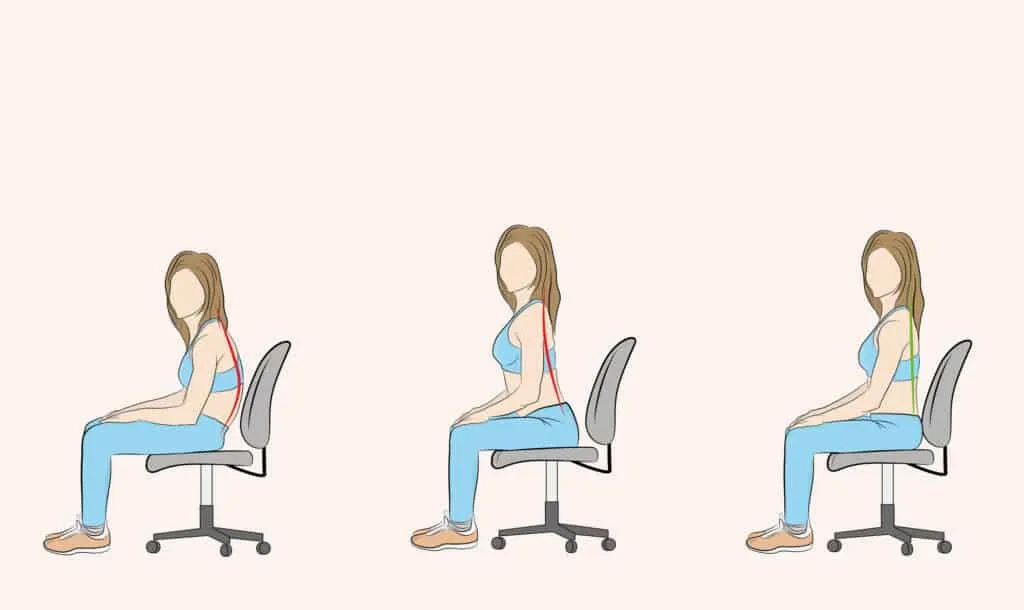
We all find ourselves hunching over a desk at some point, but there is a way to combat this problem and save your posture. When sitting at your workstation, try to keep your back hard against the chair’s backrest.
At the same time, keep your head directly above your spine – just as we’ve advised when you are walking (see above) – and your shoulders relaxed.
Don’t sit with your legs together. You should keep your legs slightly apart (roughly hip-distance apart), and use a footrest to slightly elevate your feet off the floor.
We would also recommend placing some support at the base of your back. If you can’t afford a fancy backrest, use a pillow (or even a rolled-up towel or t-shirt) to give your lower back some support.
Also, get up and stretch every so often to take the pressure off your spine and discs. You don’t want that dreaded hernia!
If your office chair feels uncomfortable, chances are it’s adding to the pressure in your back. Don’t put up with a chair that doesn’t support the curve of your spine, or give you a chance to correct your posture. Buy yourself a supportive office chair, it will make a huge difference!
Support When Lifting
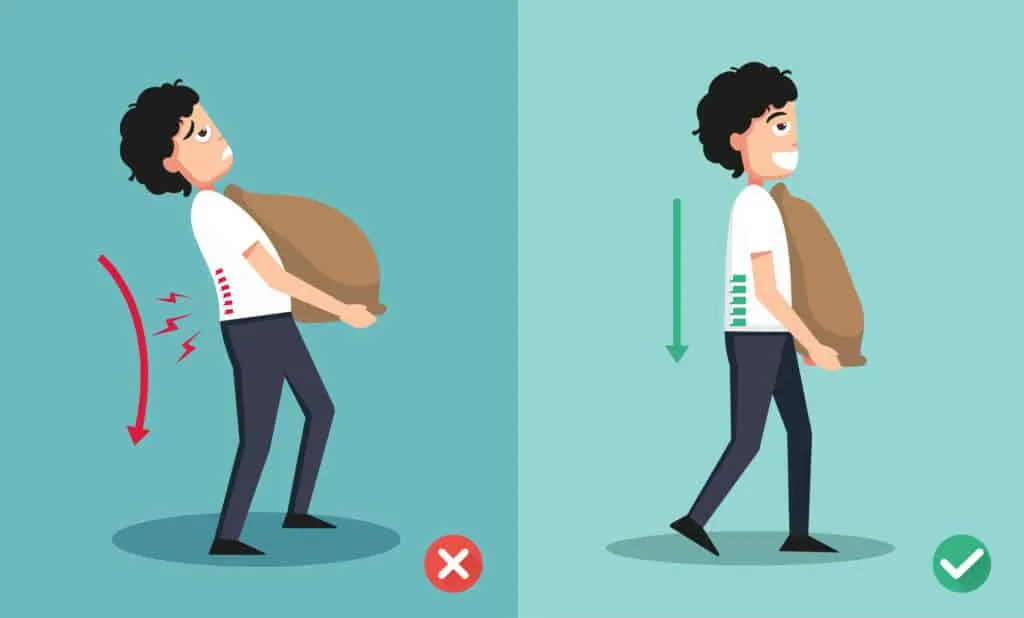
We can all get lazy when lifting heavy objects. Sometimes, we simply don’t think and go about heavy lifting with no regard for the correct (and safe) procedure.
To lift something heavy off the floor, you are meant to squat down and use your knees to bear the weight – keeping your back straight as you do so. But it’s not over yet. You should hold the item close to your chest while straightening your knees and standing up straight.
When we rush this procedure, it’s easy to craft an improper posture and cause damage to your lower back. Take your time with heavy lifting. You won’t think cutting corners is worth it while laying flat out on the floor and counting the hours until your next dose of painkillers.
Don’t think that you can take liberties with lifting smaller items, either! One wrong twist or overstretching of the muscles and you’ll create more back pain than you can tolerate.
To lift lighter items, we’d suggest the “Golfer’s Lift”. Try to support yourself with one hand against a solid object (such as a counter, table etc.), and bend down at your hip while keeping your back straight. Keep a counterbalance by placing one leg backwards, to counteract the leg you place forward. Use your other hand to lift the item.
What To Remember

Our bodies are not designed for long spells of sitting, and your ligaments, muscles, and spine require a well-supported environment to remain ergonomically stable.
How do you go about this? You guessed it – posture!
If fixing your posture does not bring back pain relief, or if the pain continues to get worse, then we would advise that you get in contact with your doctor.
Alternatively, you can get in touch with us through our contact page.


